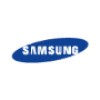
The Effect of IABP Early Insertion on Mortality in Post Cardiac Arrest Patients With Acute Coronary...
Post-Cardiac Arrest SyndromeThe prevalence of cardiac arrests is still high worldwide. Despite the return of spontaneous circulation (ROSC), mortality and morbidity in post cardiac arrest patients is reported high. Comprehensive management is essential in treating patients with post cardiac arrest syndrome. Adequate circulatory stability is achieved with fluid therapy, vasoactive drug therapy, and consideration of mechanical support. Intra-Aortic Ballon Pump (IABP) is one of the most feasible and available mechanical support in developing countries including Indonesia. There are several benefits of IABP reported in acute myocardial infarction complicated with cardiogenic shock. Nevertheless, the IABP-SHOCK II study revealed contradictive result which is IABP support was not improving mortality in acute myocardial infarction complicated with cardiogenic shock after revascularization. Other study, Korean Acute Myocardial Infarction Registry (KAMIR), also reported no benefits of IABP support in cardiogenic shock patients. But, the study the investigators mentioned earlier is a registry study, attributed to selection bias and several confounding factors resulting mismatch in population. There are no consideration to IABP time of initiation and duration of use in both studies. The Investigator is aiming to prove the early insertion of IABP to a better outcome compared with the absence of early IABP. The objective of the study is to assess mortality in post cardiac arrest syndrome patients with early insertion of IABP support. A total of 102 subjects will be enrolled in this study, divided into IABP and non-IABP group. The primary outcome is in-hopital-mortality, and various indicators in the pathomechanisme of post cardiac arrest syndrome will be measured in 30 minutes and 6 hours after ROSC. Effective lactate clearance, IL-6, Beclin-1, Caspase-3, a-vO2 diff, and ScvO2, cardiac output, VTI, TAPSE and ejection fraction will be measured and analized between the two groups.

Inflammation Reduction by TREhalose AdminisTration
Acute Coronary SyndromeArterial wall inflammation has been consistently suggested to serve a causal role in promoting atherosclerosis and predisposing to hard cardiovascular outcomes. Therefore, there is a global trend in the pharmaceutical industry to develop safe and effective anti-inflammatory agents that could lessen arterial wall inflammation and prevent its detrimental impact on atheroma growth and instability. To this end, autophagy has emerged as a key regulator of inflammation and dysfunctional autophagy machinery has been consistently reported as a contributing factor to atherosclerosis and inflammation. Trehalose, a natural disaccharide sugar found extensively among miscellaneous organisms, by preventing protein denaturation plays various protective roles against stress conditions. Numerous studies indicated trehalose's ability to induce macrophage autophagy-lysosomal biogenesis and reduce inflammation. Also, intravenous (IV) administration of trehalose showed beneficial effects in the reversal of atherosclerosis in atherosclerotic animals. Therefore, in this study, the investigators will explore the potential efficacy of IV trehalose administration on arterial inflammation by employing an positron emission tomography (PET) with 18F-labeled fluoro-2-deoxyglucose (18F-FDG) and computed tomography (18F-FDG PET/CT) technique which noninvasively characterizes vascular inflammation and atherosclerosis.

Bivalirudin in Elderly Patients Undergoing Elective Percutaneous Coronary Intervention.
Acute Coronary SyndromePercutaneous Coronary Intervention2 moreThe study is an investigator-sponsored, prospective, multicenter, randomized, open-label study designed to compare efficacy and safety between bivalirudin and heparin in elderly patients with acute coronary syndrome undergoing elective percutaneous coronary intervention.

Feasibility Trial Evaluating Efficacy and Safety of Solitaire™ Thrombus Retrieval Device in the...
Refractory Thrombus in Patients With Acute Coronary SyndromeThe study is designed as a multicentre open label prospective feasibility trial to capture preliminary efficacy and safety information on Solitaire device to plan an appropriate pivotal study.

Optimized Antiplatelet Therapy on the Prognosis of ACS Patients With Non-predominant Coronary Artery...
Acute Coronary SyndromePercutaneous Coronary InterventionThe study is to evaluate the effect of optimized 12-month step-down antiplatelet therapy (APT) compared with standard 12-month dual antiplatelet therapy in clinical net adverse events, cardiovascular and cerebrovascular adverse events and reducing clinical related bleeding events in the patients with acute coronary syndrome (ACS) who are not the predominant coronary artery disease after percutaneous coronary intervention (PCI).

Bioresorbable Polymer-Coated EES in Patients at High Bleeding Risk Undergoing PCI Followed by 1-Month...
Coronary Artery DiseaseAcute Coronary SyndromeObjective: To evaluate the safety of bioresorbable polymer-coated everolimus-eluting Synergy® stent followed by 1-month dual antiplatelet therapy in patients at high-bleeding risk. Study population: Real world high-bleeding risk (HBR) patients with coronary artery disease (stable as well as acute coronary syndromes) who qualify for percutaneous coronary interventions. Study size: A total of 1023 patients will be enrolled. Study design: Prospective, single-arm, multicentre trial, powered for non-inferiority with respect to objective performance criteria (OPC). Antiplatelet therapy: Dual antiplatelet therapy with aspirin 100 mg od and a P2Y12 inhibitor for a duration of 1 month, after which single antiplatelet therapy with aspirin will be recommended indefinitely. In case of need for oral anticoagulation, patients will receive an oral anticoagulant in addition to a P2Y12 inhibitor without aspirin for 30 days. Primary endpoint: Composite of cardiac death, myocardial infarction, or definite/probable stent thrombosis at 1-year follow-up.

Efficacy and Safety of BiomatrixTM Stent and 5mg-Maintenance Dose of Prasugrel in Patients With...
Cardiac DeathHemorrhage2 moreThe purpose of this study is to evaluate the efficacy and safety of 5mg maintenance dose (MD) of prasugrel in patients with acute myocardial infarction (AMI) who underwent percutaneous coronary intervention (PCI) with BiomatrixTM stent.

China Intensive Lipid Lowering With Statins in Acute Coronary Syndrome
Acute Coronary SyndromeIn summary, the CHILLAS study will be the first multicenter study performed in a Chinese population using a patient-level analysis to compare the effects and safety of intensive statin therapy with that of moderate statin therapy. Therefore, it will determine whether "lower is better", that is, whether LDL cholesterol lowering to a level of approximately 100mg/dl provides a benefit inferior to that of LDL cholesterol lowering to a much lower level; examine the role of inflammatory markers in predicting cardiac events and response to statin therapy; and evaluate the effects of statin therapy on regression of coronary atherosclerosis using IVUS.

Effects of Intensive Lipid Lowering and Omega-3 Fatty Acid on Composition of Coronary Atherosclerotic...
Acute Coronary SyndromeThe purpose of this study is to determine whether intensive lipid lowering and Omega-3 fatty acid are effective in the treatment of coronary atherosclerotic plaque.

"Pharmacodynamic Comparison of Omeprazole Versus Pantoprazole on Platelet Reactivity in Patients...
Coronary Artery DiseaseClopidogrel and Prasugrel are pro-drug necessitating conversion in active metabolites through CYP 450 system (CYP), particularly CYP3A and CYP2C19 isoforms. These drugs are platelet purinergic receptor antagonists, known as P2Y12. The link between active metabolite of Clopidogrel and Prasugrel to P2Y12 receptor prevents ADP receptor activation and inhibits several events leading to conformational change of platelets, therefore facilitating their activation and aggregation, that is the basis of acute coronary syndromes. Proton pump inhibitors (PPI) are actually considered principal agents reducing gastroenteric bleeding risk associated to antiplatelet therapy. Nevertheless the interaction between PPI and antiplatelet therapy has been object of interest. Several studies demonstrated PPI reduce efficacy of clopidogrel on platelet reactivity. Only few data about Prasugrel are available showing a minor effect of PPI on its antiplatelet activity than clopidogrel. Differing from prasugrel and clopidogrel, ticagrelor is a direct inhibitor of P2Y12, not necessitating biotransformation in the liver; therefore its interaction with PPI remains unclear. Interaction between omeprazole and clopidogrel seems related to high inhibitory activity of PPI on CYP2C19, interfering with the conversion of clopidogrel in its active metabolite.
